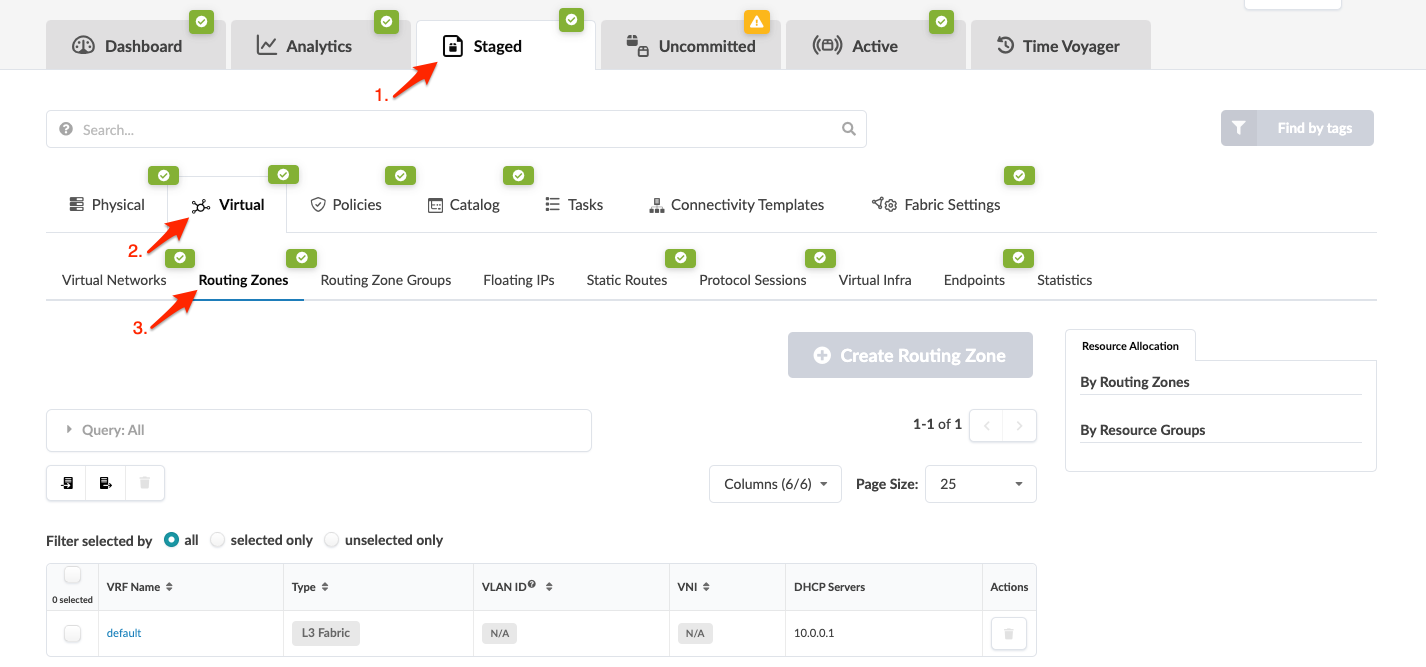Routing Zones Introduction
A routing zone is an L3 domain, the unit of tenancy in multi-tenant networks. You create routing zones for tenants to isolate their IP traffic from one another, thus enabling tenants to re-use IP subnets. In addition to being in its own VRF, each routing zone can be assigned its own DHCP relay server and external system connections. You can create one or more virtual networks within a routing zone, which means a tenant can stretch its L2 applications across multiple racks within its routing zone. For virtual networks with Layer 3 SVI, the SVI is associated with a Virtual Routing and Forwarding (VRF) instance for each routing zone isolating the virtual network SVI from other virtual network SVIs in other routing zones. If you're using multiple routing zones, external system connections must be from leaf switches in the fabric. Routing between routing zones must be accomplished with external systems. All SVIs configured for virtual networks in this zone are in the default VRF. This is the same VRF used for the underlay or fabric network routing between network devices. All blueprints include a default routing policy. The number of routing zones is limited only by the network devices being used.
Routing zones include the following details:
| Parameter | Description |
|---|---|
| VRF Name | 15 characters or fewer. Underscore, dash and alphanumeric characters only |
| Type | L3 Fabric or EVPN |
| VLAN ID | Used for VLAN tagged Layer 3 links on external connections. Leave this field blank to have it automatically assigned from a static pool in the range of 2-4094), or enter a specific value. |
| VNI | VxLAN VNI associated with the routing zone. Leave this field blank to have it automatically assigned from a resource pool, or enter a specific value. |
| Route Target | Only EVPN routing zones use route targets. The rendered EVPN L3-VNI route target represents the built-in, automatic route target that is associated with the EVPN routing zone VRF. When using EVPN remote gateway features for Data Center Interconnect, this route target must be imported by the EVPN fabric external to this fabric. This route target is composed of "<VNI_ID>:1" where "1" is hard-coded. If route target is not assigned, then a VNI must be assigned. |
| DHCP Servers | |
| Routing Policies | Non-EVPN blueprints must use the default policy. EVPN blueprints can use non-default policies. For more information, see Routing Policies. |
| Route Target Policies |
|
| Resources | |
| Virtual Networks | |
| Interfaces |
From the blueprint, navigate to Staged > Virtual > Routing Zones to go to the routing zones table view. You can create, edit, import, export and delete routing zones and assign DHCP servers to them. (The screenshot below is for Apstra version 4.2.0. Version 4.2.1 includes a column for Routing Policy Name that you can link to directly; and you can select which columns to show in the table. In Apstra version 4.2.1, some menu tabs have been renamed, moved, and/or added.)

